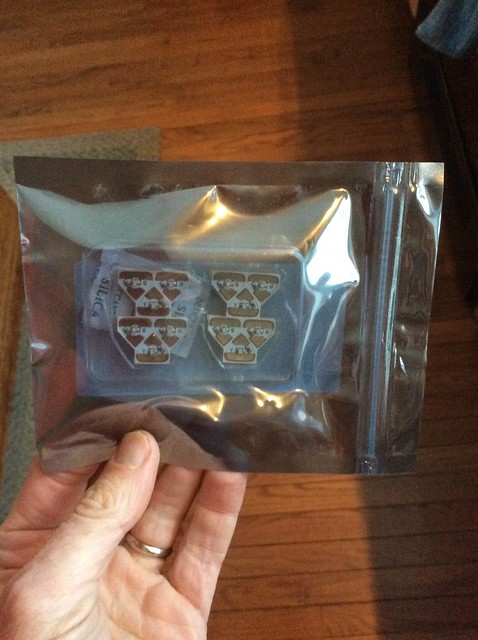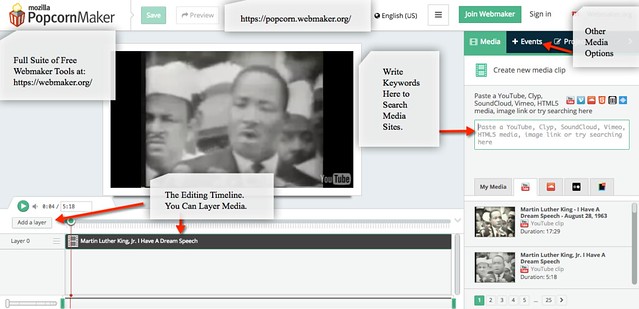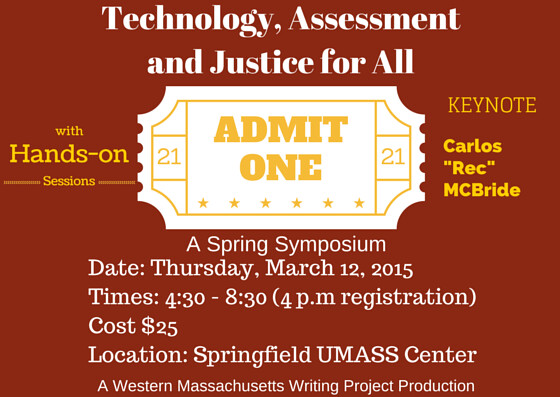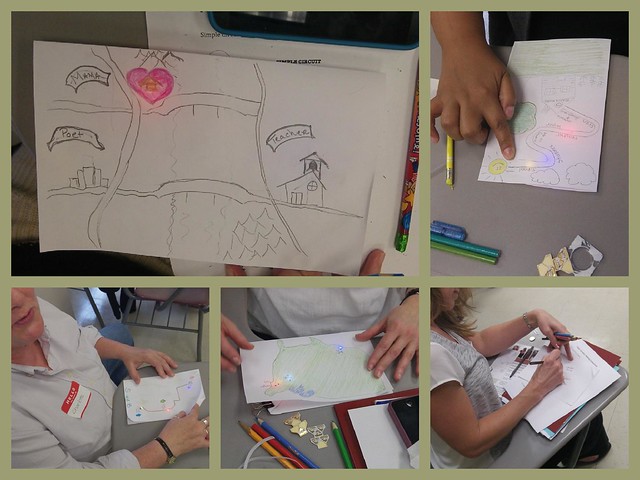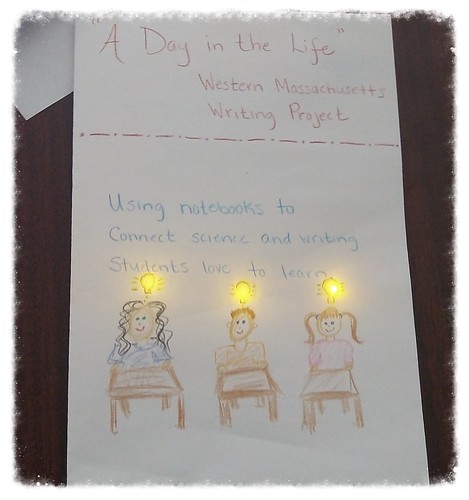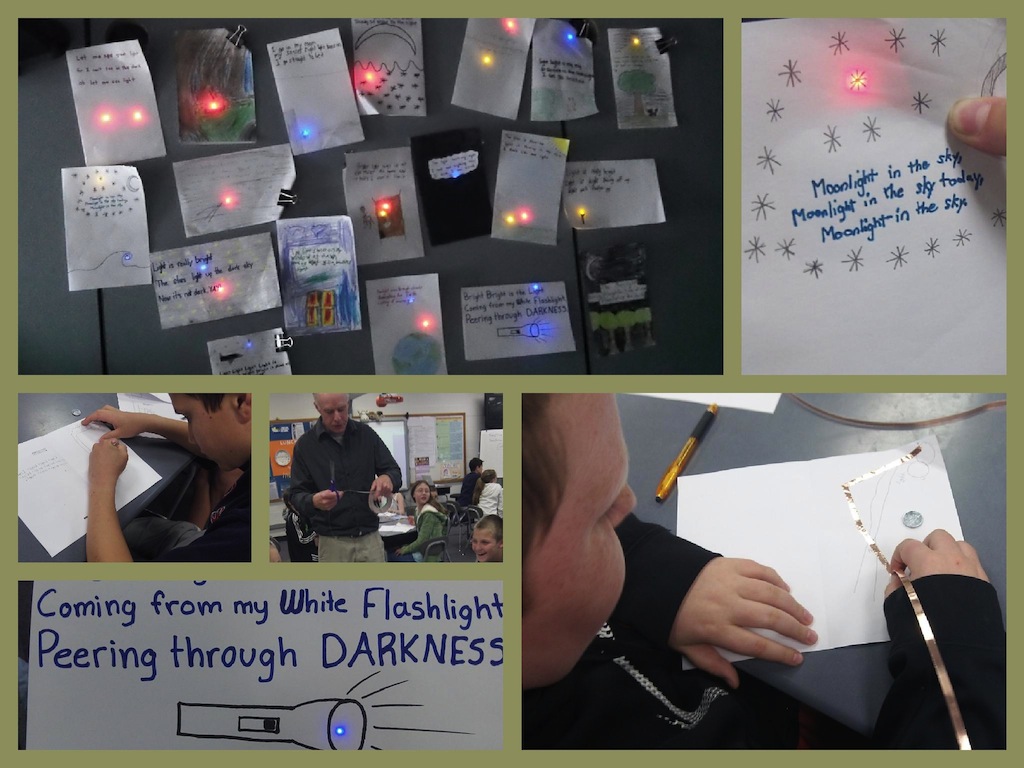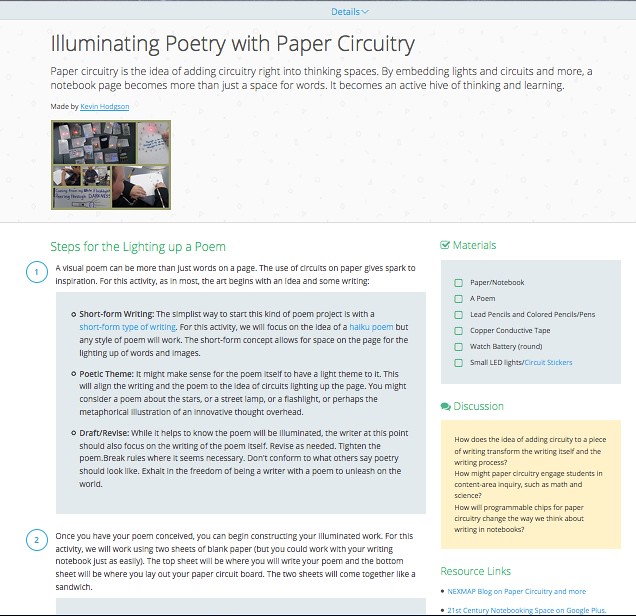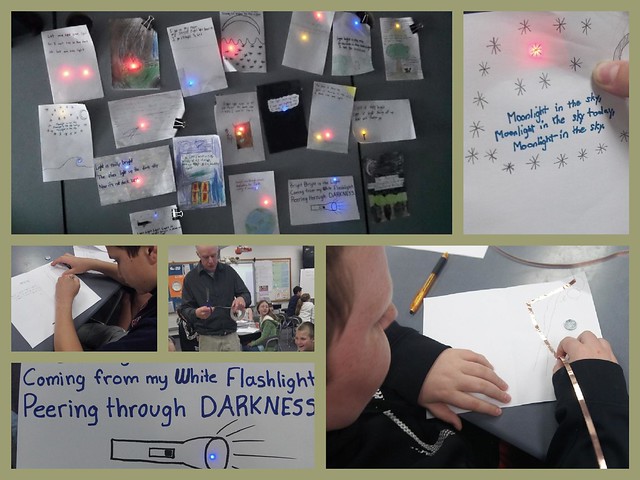
I am very fortunate that I am able to do a small pilot project with my sixth graders using ‘Paper Circuitry‘ — a process that embeds circuits and LED lights into notebooks. The idea is to illuminate writing (literally) and also to pull together the concepts of the scientist/inventor notebook with the writing notebook in interesting ways.
This afternoon, with one of my classes, we are going to be working on illuminated haiku poetry. It began with the cold question around “what is a circuit” and asking them to draw it out (part of a pre-pilot questionnaire that I found helpful, too). Check out:
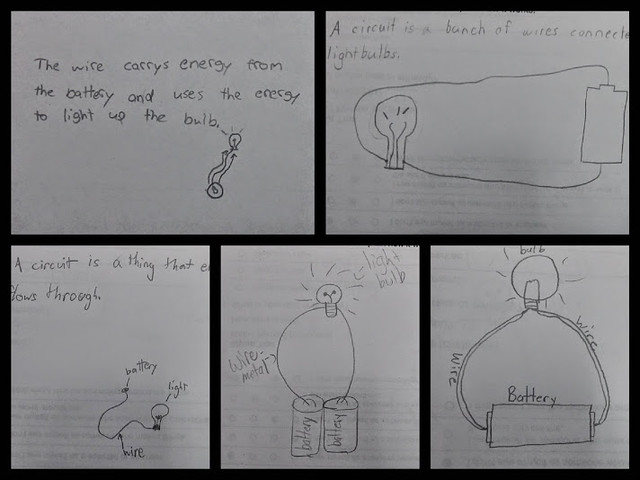
Thanks to my fifth grade colleagues, many of my sixth grade students had a pretty decent grasp of circuits going into this pilot. We’ve since done some mini-lessons around circuits as a way to keep the idea in their minds.
Then, last week, students wrote a bunch of haikus, with at least one having the theme of “light” somehow. This was intentional, of course. This week, they worked on creating a final version of the haiku, with folded paper. The front side is the poem (sort of like a greeting card format) and the inside will be their paper “circuit board” where we will use circuit tape (although I am amped — ahem — for the future of conductive pens where what you write becomes the “wire” of the circuit — so cool!).
Although I have done some paper circuitry in a workshop at the DML Conference with Jennifer and David, from NexMap (which works with a researcher out of MIT who is developing the process) and Paul from National Writing Project, I wanted to try a parallel circuit (instead of the simple circuit) because I know some students want multiple lights in their poem project.
And it worked! (After I watched some videos, learning from the Internet, of course). You can see my poem, inside and out, in the image above.
I’m also excited because our Western Massachusetts Writing Project is going to be participating in a Hack the Notebook day in July, using paper circuitry with teachers who will be in our Summer Institute, and some folks beyond, to play around with science and writing, and the connections between the two. I hope to document today’s work with students (and maybe get a few student projects as samples) as something to share in July.
I’m still trying to figure out how to display the poems in my classroom when they are done, because the battery makes the weight of each one a little tricky. But I have parents using my room for a meeting and it would be pretty nifty to have the illuminated poems all lit up with student works, right?
Peace (on paper),
Kevin
